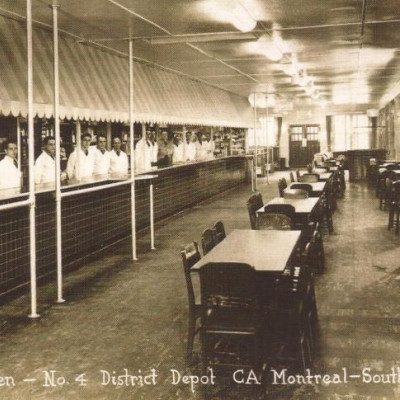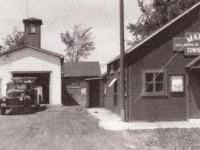 The City of Montreal is flanked on both sides by the towns of Montreal East and Montreal West, each with their own different character. Even after the municipal mergers of 2002 , the former city of Montreal North remains a separate borough on the island map. While most points are covered, it is the south that is missing from the Montreal compass. In fact, there once was a town known as Montreal South. Now almost forgotten, it was located at the base of the Jacques Cartier bridge , nestled between Saint Lambert and Old Longueuil.
The City of Montreal is flanked on both sides by the towns of Montreal East and Montreal West, each with their own different character. Even after the municipal mergers of 2002 , the former city of Montreal North remains a separate borough on the island map. While most points are covered, it is the south that is missing from the Montreal compass. In fact, there once was a town known as Montreal South. Now almost forgotten, it was located at the base of the Jacques Cartier bridge , nestled between Saint Lambert and Old Longueuil.
The history of Montreal South starts in 1888, when a large track of land located between Government Farm (Old Longueuil) and Woodrow Farms (St. Lambert), just opposite Montreal, was opened and divided into building lots by developer George Parent who later bought land and divide lots in Greenfield Park and St. Hubert. The lots were sold to twelve English-speaking families (mostly northern English and Scots) who worked on the building of the Victoria Bridge.
Wanting to escape the grime of Montreal, they longed for a place in the country. There were no roads and these early settlers had to have their supplies drawn across the fields and through bush or over the snow in the winter. The first graded earth road with ditches was called Victoria Avenue (now Goupil) after Queen Victoria. In 1889, after several houses were built and families moved in, a station house was built at the junction of St. Helen and the Grand Trunk Railway tracks connecting Montreal South to Montreal via the Victoria Bridge.
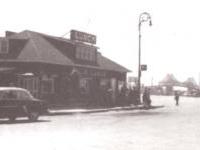 Having a direct link would allow Montreal South’s population to grow quickly. By 1890, a small building was used for both a school and for Methodist and Baptist church services. When it became too crowded, church services were moved to the railway station.
Having a direct link would allow Montreal South’s population to grow quickly. By 1890, a small building was used for both a school and for Methodist and Baptist church services. When it became too crowded, church services were moved to the railway station.
On April 30, 1892, with a grant of $200, Montreal South Union Church opened on St. Helen. The church was called Union because Methodists, Baptists and Anglicans would meet, each taking a different time to hold their services. Also, the church hall would later be rented for use as a two-room English schoolhouse for the younger grades (older students went to school in Longueuil.) The Presbyterians being a larger community, they would open their own church, Gardenville-St.Mark’s, in 1898.
By 1905, the population of Montreal South had grown to 590 and the community was incorporated as a town. By 1906, the newly-formed Montreal & Southern Country Railway began a daily interurban trolley train across the Victoria Bridge. For eight cents, workers were provided quick transport to and from the industrial factories along the Lachine Canal. The M&SCR located its first station in St. Lambert, and soon added a branch line to Montreal South. Being less then 10 minutes (5.2 miles) from Montreal’s McGill Street -d'Youville station, and located within a short walk of the shops of St. Lambert would increase land values. Therefore, most of the new residents who moved to Montreal South were the higher paid middle managers and plant foremen. This gave Montreal South a higher social status than its St.Hubert Trolley line cousins. And unlike Montreal South’s country cousins, electricity came as early as 1906 to the community.
With its country lifestyle, Montreal South would provide the best of both worlds. By 1943, a new English school, the William White School, opened on the corner of Lafayette Street with a capacity of 250 students. Most of the English community life focused around the community’s three churches – Montreal South United, Gardenville Presbyterian, and St. Oswald’s Anglican. These churches would host dinners, bazaars and fairs. They would join together for snowshoe tramping in the open fields and winter sleigh rides, trips across the frozen river along the ice road. During the summer, outdoor picnics and hiking trips along the river were common.
The population of Montreal South remained largely English-speaking until the end of the 1940s. The end of the war and opening of the Jacques Cartier Bridge brought much expansion to the area around the base of the bridge, and the South Shore was now growing.
By 1951, the population more then tripled from 1,441 to 4,214. The English community was now in a minority position. While life in Montreal South was very peaceful and uneventful for most of its first fifty years, a growing problem for residents in the 1940s was their neighbours immediately to the east. Ville Jacques Cartier had grown almost overnight and with few rules and a mishmash of poor housing, it truly became the place known as the wrong side of the tracks. Crime would often spill over and for long-time residents who were once seeking a gentle country life, it was now time to move on.
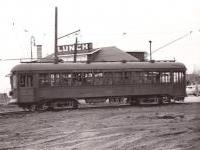 By the 1950s, the run of the M&SCR was coming to an end. The transit system was replaced by a come-by chance bus network. The old factory district at the base of McGill Street was undergoing much change as plants closed or moved westward. Employees now preferred to stay on the island of Montreal. Newer, more attractive South Shore suburbs were also opening closer to the newly completed Champlain Bridge. The population had reached 5,756 and there was now a need to provide better municipal services.
By the 1950s, the run of the M&SCR was coming to an end. The transit system was replaced by a come-by chance bus network. The old factory district at the base of McGill Street was undergoing much change as plants closed or moved westward. Employees now preferred to stay on the island of Montreal. Newer, more attractive South Shore suburbs were also opening closer to the newly completed Champlain Bridge. The population had reached 5,756 and there was now a need to provide better municipal services.
On January 28, 1961, Montreal South merged into Longueuil. (Jacques Cartier would merge in 1969.) This new municipal merger would bring about some important physical changes to the community. New housing would replace the smaller homes that once lined the streets. With the opening of shopping centres, there was less business for the stores along St. Helen, and most would soon close.
Nevertheless, English community life in Montreal South in the early 1960s remained fairly active. As it always had been, it was mostly centred on church life. Ladies would prepare afternoon teas and luncheons. To celebrate the town’s 75th anniversary in 1964, a huge dinner and concert for over 300 people was held. This would also prove to be the last hurrah for the English-speaking community of Montreal South. With new English-speaking residents now choosing to locate in Greenfield Park or Brossard, the already small community would continue to shrink.
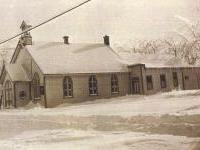 After marking its 81st anniversary in 1970, Montreal South United Church would close its doors. A year later, St. Oswald Anglican Church hosted a final service, with a handful of remaining worshippers, to officially dissolve the church – and this despite the fact that the building was only 15 years old (both churches were later torn down).
After marking its 81st anniversary in 1970, Montreal South United Church would close its doors. A year later, St. Oswald Anglican Church hosted a final service, with a handful of remaining worshippers, to officially dissolve the church – and this despite the fact that the building was only 15 years old (both churches were later torn down).
The old M&SC train route that would go into Montreal South lay abandoned for many years serving as part dog walk and night spot for romantic teenagers. Recently, the old railway tracks were removed and replaced by a bicycle path leading into Longueuil. By 1998, with less than fifty students, the once bustling William White School was closed. Montreal South had become a faded memory.
The City of Longueuil has since placed historical plaques in its new town hall to serve as a reminder of the former towns now merged under its name. For Montreal South’s 56 years of official history, there is barely a line that speaks about the town’s once-deep English-speaking roots.
**Kevin Erskine-Henry is the chair of the South Shore Community Partners Network. Part of the SSCPN's mandate is to promote Local Community History.
